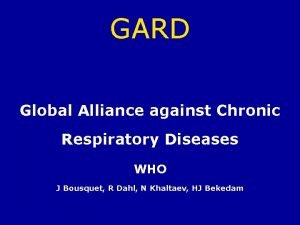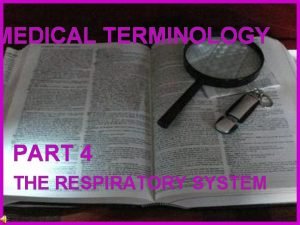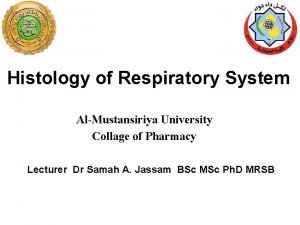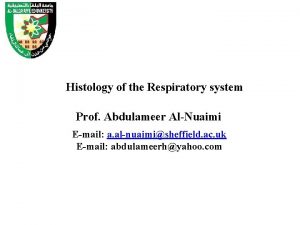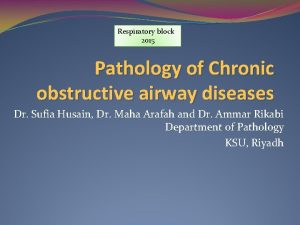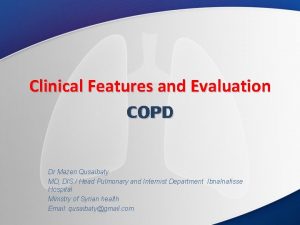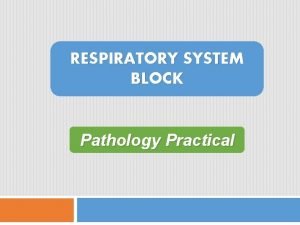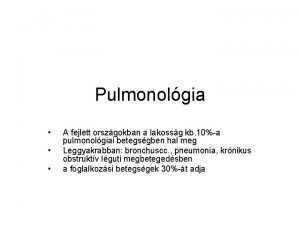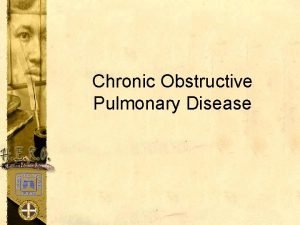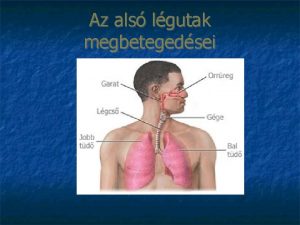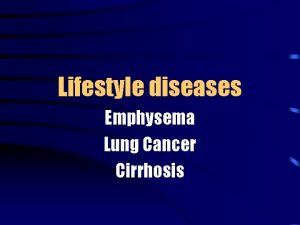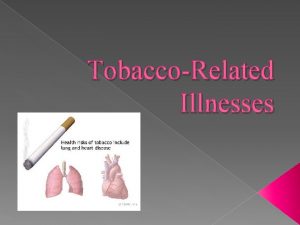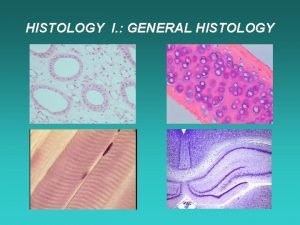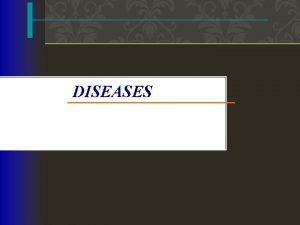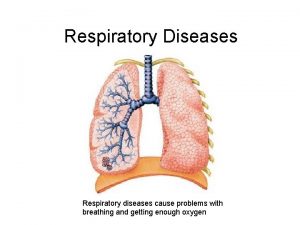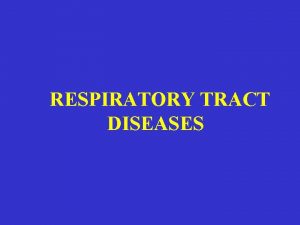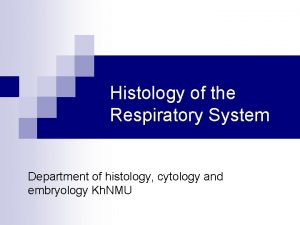Respiratory Diseases Emphysema Emphysema Histology Asthma Asthma Asthma













- Slides: 13

Respiratory Diseases

Emphysema

Emphysema Histology

Asthma

Asthma • Asthma is an inflammatory disorder of the airways, characterized by periodic attacks of wheezing , shortness of breath , chest tightness , and coughing. • Three things make it harder to breathe during an asthma attack -- the inflammation (swelling) of the lining of the airways, the tightening of the muscles around the airways, and fluid/mucus filling the airways. These factors reduce airflow and produce the characteristic wheezing sound.


Asthma helpers

Bronchitis

COPD • Chronic Obstructive Pulmonary Disease (COPD) • Irritation of the lungs can lead to asthma, emphysema, and chronic bronchitis. And, in fact, many people develop two or three of these together. This constellation is known as chronic obstructive pulmonary disease (COPD). • Among the causes of COPD are • cigarette smoke (often) • cystic fibrosis (rare)


Tuberculosis • Tuberculosis is an infectious disease that causes inflammation, the formation of tubercules and other growths within tissue, and can cause tissue death. • Pulmonary tuberculosis (TB) is caused by the bacteria Mycobacterium tuberculosis (M. tuberculosis). You can get TB by breathing in air droplets from a cough or sneeze of an infected person. This is called primary TB.

Lung Cancer There are several forms of lung cancer, but the most common (and most rapidly increasing) types are those involving the epithelial cells lining the bronchi and bronchioles. Ordinarily, the lining of these airways consists of two layers of cells. Chronic exposure to irritants causes the number of layers to increase. This is especially apt to happen at forks where the bronchioles branch. The ciliated and mucus-secreting cells disappear and are replaced by a disorganized mass of cells with abnormal nuclei. If the process continues, the growing mass penetrates the underlying basement membrane. At this point, malignant cells can break away and be carried in lymph and blood to other parts of the body where they may lodge and continue to proliferate.

Other Cystic fibrosis • Cystic fibrosis is a genetic disorder-The lungs produce copious amounts of a heavy mucus that plugs the airways interfering with breathing and causing a persistent cough. • Sarcoidosis is a disease in which inflammation occurs in the lymph nodes, lungs, liver, eyes, skin, or other tissues. but it most commonly affects the lungs. • Possible causes of sarcoidosis include: • Extreme immune response to infection( rash) • High sensitivity to environmental factors (cough) • Genetic factors
